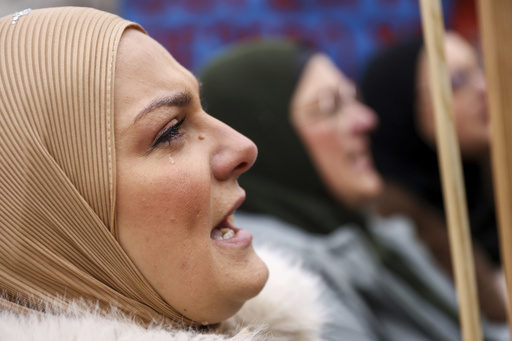
SARAJEVO, Bosnia-Herzegovina — On Monday, students in Bosnia and Montenegro came together to protest against corruption, inspired by the ongoing demonstrations in neighboring Serbia. Those protests have significantly challenged the government and sparked a broader movement for political reform in the region.
In Sarajevo, the capital of Bosnia, students pressed for accountability regarding the tragic deaths of 29 individuals last October, when intense flooding triggered a landslide from a quarry constructed without proper authorization.
Meanwhile, in Montenegro, students are advocating for the dismissal of top security officials following two mass shooting incidents that occurred in less than three years, resulting in the deaths of 23 people, including children.
Student-led occupations and disruptions of roads and bridges have gripped Serbia in the wake of a catastrophic incident on November 1, when a railway station canopy collapse took 15 lives. This tragedy has been attributed by critics to the corruption that plagues construction contract allocations.
The former Yugoslav nations of Serbia, Bosnia, and Montenegro have long suffered from issues associated with corruption and poor governance. The resurgence of student activism highlights these common frustrations across the Balkans, particularly as the countries aim for European Union membership while grappling with significant reform delays.
Sumeja Durakovic, a student from Sarajevo, observed the effectiveness of the protests in Serbia, noting, “As we can see in Serbia, the protests there are effective because they are massive. Other people are joining the students, and they are persistent.”
In solidarity, students from Croatia and Slovenia have also organized gatherings supporting their Serbian counterparts. Additionally, demonstrations have taken place in cities throughout the United States, Canada, Australia, and the European Union, where substantial populations of former Yugoslav residents reside.
The protests in Serbia initially erupted after the canopy collapse in Novi Sad, escalating into widespread demands for political reform that challenge the authority of populist President Aleksandar Vucic, who has maintained control over Serbia for more than a decade.
In Sarajevo, demonstrators displayed banners reading “Crime without punishment” and shouted, “We won’t stop!” as they sought to hold accountable those responsible for the devastating landslide. The students stated, “They weren’t killed by the rain or rocks, but by the negligence of the authorities and institutions, which had not acted preventively and with responsibility toward our lives, our homes, the nature.” They emphasized that, “Four months have passed and no one was held accountable for the deaths of 29 of our fellow citizens.”
Milo Perovic, one of the protest organizers in Montenegro, highlighted the necessity of capitalizing on the “waves of boldness” emerging from Serbia. Public outcry intensified after a mass shooting on New Year’s Day claimed 13 lives before the shooter took his own life. Many in Montenegro questioned the lack of action following an earlier fatal incident in 2022 that resulted in the deaths of 10 individuals, including two children. In that event, the gunman was ultimately shot by a passerby.
Montenegrin protests have seen participants engaging in daily silent blockades lasting 23 minutes to honor the victims of the shootings, paralleling the 15 minutes of silence offered each day by Serbian students to remember the victims of the canopy tragedy.
Lamija Fuka from Sarajevo expressed optimism in the students’ ability to unite to instigate societal change, saying, “We, the students, can get together and change the society and our corrupt system … put an end to all of this.” She asserted that now is the moment for young people to awaken and respond to the actions of political leaders over the last three decades.

